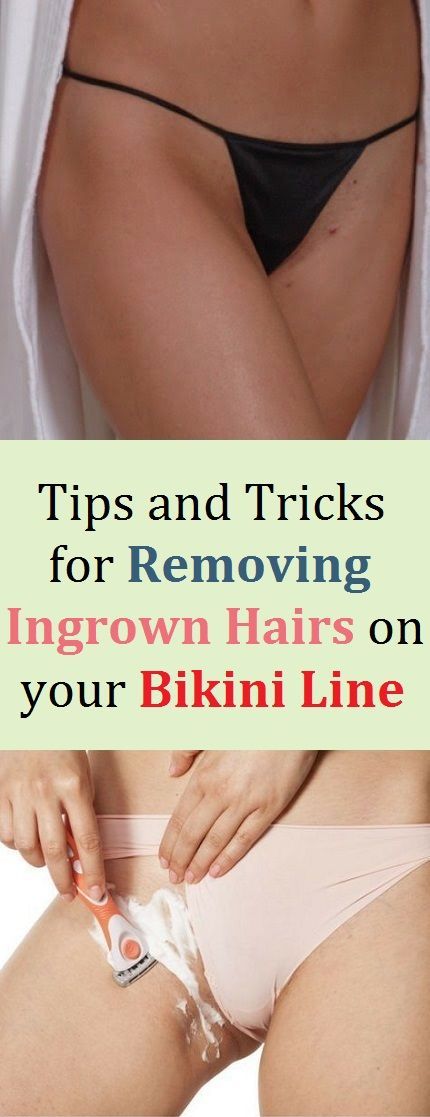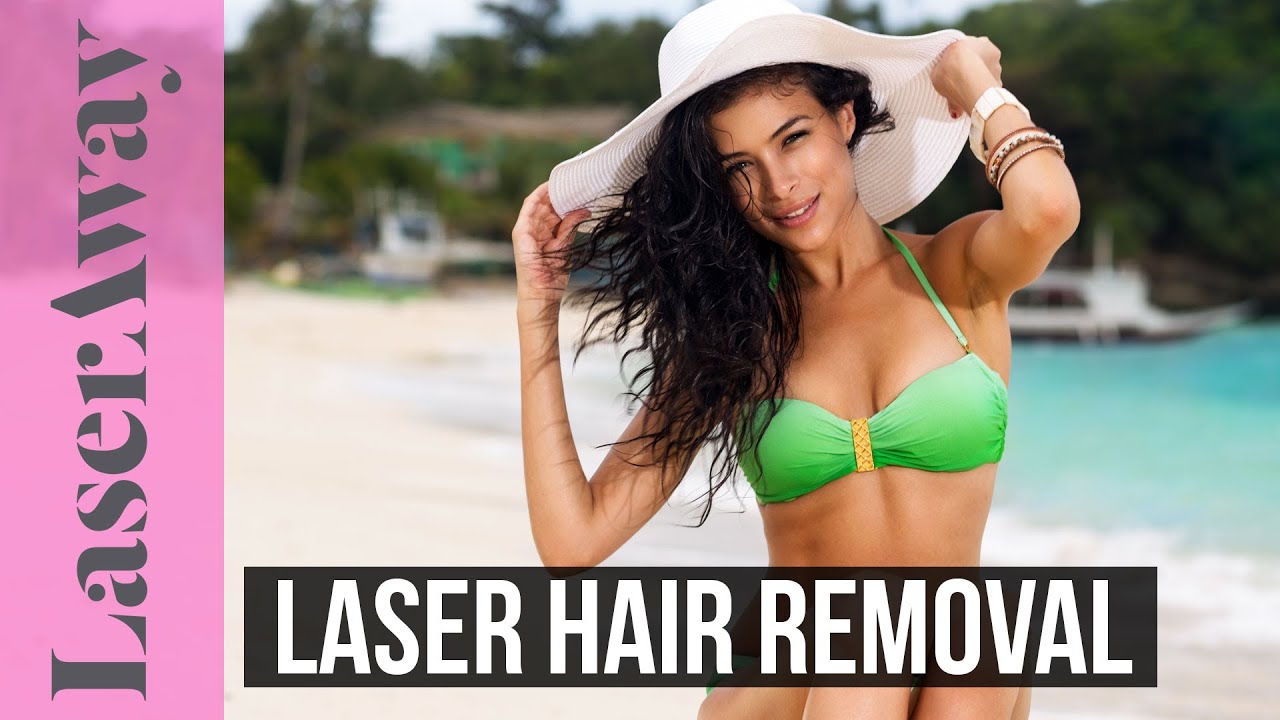Removing hair from the bikini area can feel like a daunting task, but it doesn’t have to be! Whether you're gearing up for a beach trip or simply prefer a smoother look, there are plenty of safe methods to consider. In this post, we'll dive into various hair removal options, weighing their pros and cons, so you can choose what works best for you. Let’s get started!
Understanding Hair Removal Options

When it comes to hair removal in the bikini area, you have several options at your disposal. Each method has its unique benefits and potential drawbacks. Let’s break them down:
1. Shaving
- Pros: Quick, easy, and cost-effective. You can do it at home with just a razor and shaving cream.
- Cons: It can lead to nicks, cuts, and irritation if not done carefully. Hair will grow back quickly, usually within a few days.
2. Waxing
- Pros: Longer-lasting results, as it removes hair from the root. This method can keep you hair-free for several weeks.
- Cons: It can be painful and might cause redness or irritation afterward. You may also need to let hair grow to a certain length before waxing.
3. Depilatory Creams
- Pros: These creams dissolve hair at the skin’s surface and are painless. They’re easy to apply, and results can last longer than shaving.
- Cons: Some individuals may experience allergic reactions or skin irritation. Always do a patch test before applying it to the bikini area.
4. Laser Hair Removal
- Pros: Offers a more permanent solution by targeting hair follicles. After several sessions, many people see significant reduction in hair growth.
- Cons: It can be expensive, and it requires multiple sessions. Additionally, it’s best suited for certain skin and hair types.
5. Electrolysis
- Pros: Another permanent hair removal option that works on all hair types and colors. It targets individual hair follicles.
- Cons: It can also be costly and time-consuming, as it involves multiple sessions and can be painful.
With so many options available, it’s essential to consider your personal preferences, pain tolerance, and budget. What works for one person might not be ideal for another. Take your time to explore, and don’t hesitate to consult with a dermatologist or aesthetician for tailored advice.
Also Read This: Understanding the Concerns Around Dailymotion as a Predatory Website
3. Benefits of Home Hair Removal

When it comes to hair removal in sensitive areas like the bikini line, many people are turning to home methods. Why? Well, there are some fantastic benefits that make this option not only convenient but also appealing!
- Cost-Effective: Professional treatments can be pricey, but home methods are generally much cheaper. With just a few tools, you can achieve great results without breaking the bank.
- Convenience: You can choose when and where to remove hair. No need to schedule appointments or travel to a salon. Just grab your supplies and get to work!
- Comfort: There’s something very comforting about being in your own space while handling personal grooming. Plus, you can control the environment, whether that’s playing your favorite music or adjusting the temperature.
- Privacy: Hair removal can feel personal, and doing it at home allows you to do so without the watchful eyes of a salon professional. This can ease any anxiety you might feel about the process.
- Customization: Everyone’s skin and hair type is different. When you remove hair at home, you can experiment with techniques and products that work best for you, without adhering to a one-size-fits-all approach.
Home hair removal is not just about convenience; it also empowers you to take control of your grooming routine in a way that feels right for your body. With a little practice and the right techniques, you can achieve a smooth, clean look that makes you feel confident.
Also Read This: How to Apply Lipstick Without Lip Liner for a Natural Look on Dailymotion
4. Method 1: Shaving Safely

Shaving is one of the simplest and most popular methods for removing hair from the bikini area. But it’s essential to do it safely to avoid irritation or cuts. Here’s a step-by-step guide to help you shave effectively:
- Gather Your Supplies: You’ll need a sharp razor, shaving cream or gel, and some moisturizer. A good quality razor can make a world of difference!
- Exfoliate: Before you start shaving, gently exfoliate the area. This helps remove dead skin cells and decreases the chance of ingrown hairs. You can use a mild scrub or a loofah.
- Hydrate: It’s best to shave during or after a warm shower. The heat softens the hair and opens up your pores, making shaving smoother.
- Apply Shaving Cream: Use a generous amount of shaving cream or gel to create a protective barrier between your skin and the razor. This helps reduce friction and irritation.
- Shave with Care: Use short, gentle strokes in the direction of hair growth to minimize the risk of cuts. Rinse the razor frequently to keep it clean.
- Rinse and Moisturize: After shaving, rinse the area with cool water to close the pores. Pat dry and apply a soothing moisturizer or aloe vera to hydrate the skin and reduce irritation.
Remember to replace your razor regularly to ensure a clean shave. Shaving may seem straightforward, but taking these precautions will help you achieve the best results while keeping your skin happy and healthy!
Also Read This: How to Use an ATM Machine on Dailymotion
5. Method 2: Waxing at Home
Waxing at home can be a great way to achieve smooth skin in the bikini area without the hassle of salon appointments. Plus, it can be far more cost-effective! If you're new to this method, fear not; it's easier than you might think. Here’s a step-by-step guide to get you started.
What You’ll Need:
- Waxing kit (hard wax or soft wax)
- Pre-wax cleanser
- Pre-wax oil (optional)
- Waxing strips (if using soft wax)
- Tweezers (for any stray hairs)
- After-wax soothing lotion
Step-by-Step Process:
- Prepare Your Skin: Start by cleansing the area with the pre-wax cleanser to remove any oils or lotions. This ensures that the wax adheres properly. If you have sensitive skin, consider applying a thin layer of pre-wax oil to protect it.
- Heat the Wax: Follow the instructions on your waxing kit to heat the wax. It should be warm but not hot enough to burn your skin.
- Apply the Wax: Using a spatula, apply a thin layer of wax in the direction of hair growth. If you’re using strips, place the strip over the waxed area.
- Remove the Wax: After a few seconds, hold the skin taut with one hand. With the other hand, quickly pull the wax or strip off in the opposite direction of hair growth. Quick is key!
- Post-Wax Care: Clean the area with an after-wax soothing lotion to minimize irritation. This helps calm the skin after the waxing process.
Pro Tips:
- Make sure the hair is at least a quarter-inch long for the wax to grip properly.
- Exfoliate a day or two before waxing to reduce the risk of ingrown hairs.
- If it's your first time, consider starting with a small area to see how your skin reacts.
Overall, waxing at home can lead to salon-quality results with practice. Just remember to follow all safety guidelines, and you'll enjoy smooth skin for weeks!
Also Read This: Don’t Be Tardy for the Wedding on Dailymotion: Watch the Show
6. Method 3: Hair Removal Creams
Hair removal creams, often referred to as depilatories, are another popular method for removing hair in the bikini area. They work by chemically dissolving the hair at the skin's surface, making them a quick and painless option for many. But is this method right for you? Let’s explore.
Choosing the Right Cream:
Not all hair removal creams are created equal! Look for products specifically designed for sensitive areas, as the bikini area can be more delicate. Always read the ingredients to avoid any harsh chemicals that could irritate your skin.
How to Use Hair Removal Creams:
- Patch Test: Always perform a patch test 24 hours before using the cream. Apply a small amount to a less sensitive area and wait to see if any reaction occurs.
- Application: If there’s no reaction, apply a thick layer of the cream to the bikini area, following the instructions on the package. Avoid rubbing it in.
- Wait: Allow the cream to sit for the recommended amount of time. This will usually be between 3 to 10 minutes, depending on the product.
- Remove and Rinse: Use a damp cloth or the provided spatula to gently wipe away the cream and hair. Rinse the area thoroughly with cool water.
Aftercare:
After using hair removal creams, it’s essential to soothe the skin. Apply a gentle moisturizer or aloe vera gel to calm any irritation. Avoid tight clothing or swimming for a day or two afterward to allow your skin to breathe.
Pros and Cons:
| Pros | Cons |
|---|---|
| Quick and easy application | Possible skin irritation or allergic reactions |
| Painless compared to waxing | Results last only a few days to a week |
| No risk of cuts or nicks | Strong chemical scent |
In summary, hair removal creams can be a hassle-free solution if you follow the instructions and choose the right product. Just remember that everyone's skin reacts differently, so always prioritize safety first!
Also Read This: Simple Recipe for Homemade Tomato Ketchup with Dailymotion Videos
7. Method 4: Natural Remedies
If you’re looking for a gentle approach to removing hair from the bikini area, natural remedies might be your best bet. These methods are often less irritating and can be found right in your kitchen! Here are a few popular options:
- Turmeric Paste: Turmeric has natural antibacterial properties and can help inhibit hair growth. Mix turmeric powder with water or yogurt to form a paste. Apply it to the bikini area, let it sit for about 20 minutes, and then rinse it off. Over time, many find that this method can reduce hair density.
- Sugar Wax: A simple sugar wax can be made by dissolving sugar in water and bringing it to a boil. Once it cools, apply it in the direction of hair growth and quickly pull it off in the opposite direction. This method is less painful than traditional waxing and can be made with just two ingredients!
- Honey & Lemon Mix: Honey is a natural moisturizer, and combined with lemon juice, it can help lighten hair and slow its growth. Mix equal parts honey and lemon juice, apply it to the area, let it sit for 30 minutes, and then wash it off. This method is great for those who want a lightening effect along with hair removal.
While natural remedies can be effective, patience is key! These methods may take longer to show results compared to more conventional options, but they can be gentler on the skin. It’s also wise to perform a patch test before trying any new remedy, especially in such a sensitive area.
8. Tips for Preventing Irritation
After hair removal, irritation can sometimes occur, leaving your skin feeling uncomfortable or even red. Here are some tips to help prevent irritation in the bikini area:
- Exfoliate Regularly: Before hair removal, gently exfoliating the area can help prevent ingrown hairs and allow for a smoother removal process. Use a soft scrub or a loofah.
- Hydrate Your Skin: Keeping your skin moisturized is crucial. Look for fragrance-free moisturizers to avoid any potential irritation. Aloe vera gel is a fantastic natural option for soothing the skin post-hair removal.
- Avoid Tight Clothing: After hair removal, wear loose-fitting underwear and clothing to minimize friction. This simple change can make a big difference in preventing irritation.
- Limit Hot Showers: While it might be tempting to take a hot shower post-removal, hot water can aggravate sensitive skin. Instead, opt for lukewarm water to help keep irritation at bay.
- Watch Your Products: Avoid using harsh soaps or products with strong fragrances in the bikini area for at least a couple of days post-removal. Stick to gentle cleansers that are designed for sensitive skin.
Implementing these tips can significantly enhance your experience and reduce the likelihood of irritation. Remember, taking care of your skin is just as important as the hair removal method you choose!
 admin
admin








